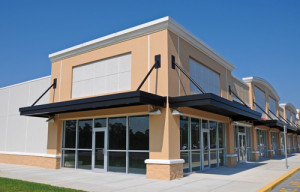Hidden Charges and Bad Faith Are Rooted Out in Lease Audits
 If you are the tenant under a commercial lease, there is a good chance you are being overcharged. Studies suggest that as many as 75% of tenants are being overcharged by their landlords, sometimes inadvertently, sometimes not.
If you are the tenant under a commercial lease, there is a good chance you are being overcharged. Studies suggest that as many as 75% of tenants are being overcharged by their landlords, sometimes inadvertently, sometimes not.
Tenants typically focus on the monthly rent, but overcharges are frequently seen in billing for Common Area Maintenance (CAM) charges which includes the landlord’s maintenance, operational and, often, administrative costs of the property. In most cases, the tenant is responsible for a certain percentage of CAM costs.
When first reviewing a lease, it’s important to know that the items included within CAM are often negotiable. This should not be taken lightly. If not negotiated out, landlords often include management fees and/or administrative fees in CAM, most commonly as a fixed percentage of the other CAM charges. Management fees can include the costs incurred by the landlord to retain a management company to manage the property, or even to manage the property itself. In addition, landlords may charge administrative fees which, essentially, are intended to “cover” the costs of the landlord’s overhead, including payroll for internal staff to perform tasks such as processing rent payments or calling a snow plow company.
In addition, CAM charges can be inflated and have sometimes been found to include charges for other properties the landlord owns or even work done at the landlord’s personal residence. And, since such costs are passed through to the tenant, the landlord has little incentive to put the work out to bid, often resulting in excessive charges.
Other CAM findings relate to consistency with the terms of the lease. For instance, the lease may entitle you to a base amount for CAM, yet your billing does not reflect the base amount. Or, the calculations of your allocated percentage can just be flat out wrong.
You may be overbilled for taxes as well. Like CAM, leases sometimes have a base amount for taxes that the landlord will absorb. The base amount may not be reflected in your billing. Or, the tax bill may include charges for things that don’t relate to you. For instance, an illuminated sign fee for an adjacent tenant, or late fees attributable to a landlord’s late payment despite the fact that you paid your share of the taxes on time.
Look beyond the elements of your monthly rent bill. Tenants often pay the rent bill as long as it is the same usual price. So, if your rent bill looks like this every month,
Fixed Rent: $15,000
CAM: $ 3,000
Taxes: $ 5,000
Total: $23,000
your bookkeeper likely cuts a check for the $23,000 because that’s what you’ve always paid. Focus is likely on paying the bill timely than for the bill’s accuracy.
Costs are often reconciled at the end of the year and tenants may be billed for additional amounts if their share of CAM and/or taxes were more than what they were charged during the year. You are entitled to see the back-up invoices that support the tax and CAM charges (e.g. the tax bills, invoices from the snow plow company).
Most importantly, leases often limit the time in which you can question the charges. To preserve your rights, it would be prudent to call in “another set of eyes” to audit such charges sooner rather than later. Not only can historical overcharges be recaptured, but the findings can correct future mis-billing.
In a competitive marketplace in which you must keep costs under control, you should not overlook the basics. A lease audit can save you tens of thousands of dollars.
The good news is that there are experts who are familiar with your business and know what to look for when reviewing your lease and billing. The initial cost is minimal. If you would like to learn more, call Levine Law, LLC at (516) 921-6700.
 Harlan Levine
Harlan Levine
Tel. (516) 921-6700
[email protected]

